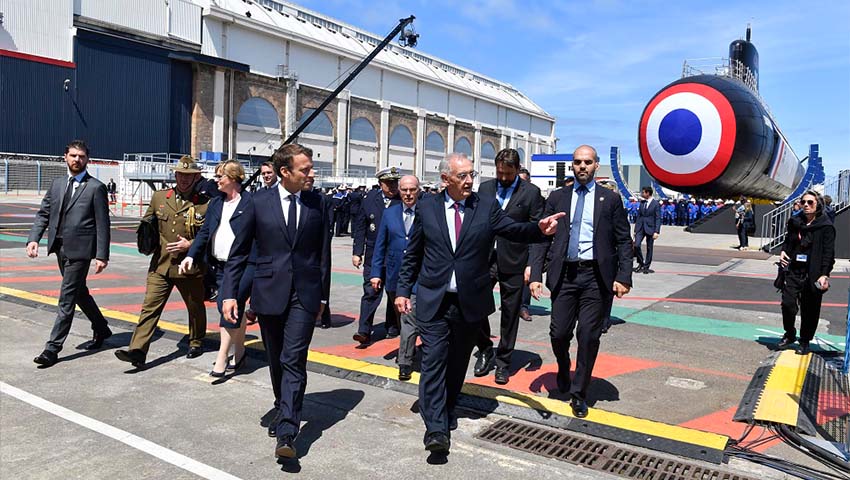Defence Minister Linda Reynolds has joined French President Emmanuel Macron at the launch of Naval Group’s latest nuclear attack submarine, the Suffren, the lead of the Barracuda Class.
The Suffren is the first of the Barracuda Class series, designed to replace the Rubis Class generation. Naval Group is in charge of the construction of this submarines series, including the design and construction of the ship and information systems as well as the manufacturing of the main components of nuclear boiler rooms.
Naval Group is the overall prime contractor of the ship’s architecture (2,500 people) and TechnicAtome is the prime contractor for the nuclear reactor. The French Defence Procurement Agency (DGA) is in charge of the overall program, with the Atomic Energy and Alternative Energies Commission (CEA) for the nuclear reactor.
Hervé Guillou, chairman and chief executive of Naval Group, welcomed the delivery of the Suffren, saying, "We are proud to have presented to the President of the French Republic the first submarine of the Barracuda Class, a symbol of our exceptional know-how and our ability to master the most advanced technologies and the most complex products."
With this program, Naval Group irrigates the French industry with more than 10,000 people and 800 companies involved.
All the skills within the group are called upon to design and produce the Suffren and the following of the Barracuda series. All Naval Group sites are simultaneously mobilised. Nantes-Indret, Angoulême-Ruelle, Brest and Lorient design and produce different systems and modules. The Ollioules site is responsible for the design and production of the combat system. The entire program is managed from Cherbourg, where the submarines are assembled and tested.
The Toulon site will be in charge of the maintenance of the Suffren and gradually that of the entire series. The in-service support was taken into account from the submarine’s design stage to limit the number and duration of interventions, thus optimising the availability of the Barracuda Class at sea.
Vincent Martinot-Lagarde, director of the Barracuda program at Naval Group, also commented, "To successfully complete this extraordinary project, several thousand women and men worked together, driven by the same values of team spirit and technical excellence. Today, on the occasion of this exceptional ceremony, we are very proud to present our work, which is the result of the extraordinary diversity of our skills."
Naval Group's Barracuda Class serves as the base design for the diesel-electric Shortfin Barracuda variant that is to become the Attack Class submarine for the Royal Australian Navy. The 12 vessels will be built by NAVAL Group at a specialist submarine shipyard at Osborne, South Australia.
The Attack Class submarines will be delivered as part of the $50 billion SEA 1000 Future Submarine program. Naval Group will build 12 regionally-superior submarines to the Royal Australian Navy.
Lockheed Martin will provide the AN/BYG-1 combat control system, which provides an open-architecture submarine combat control system for analysing and tracking submarine and surface-ship contacts, providing situational awareness as well as the capability to target and employ torpedoes and missiles.
The Commonwealth government’s Australian Naval Infrastructure program will support the development of the future submarine shipyards.
The Commonwealth government formally signed the strategic partnering agreement with Naval Group in February 2019 ahead of confirming the final design specifications and requirements for the Attack Class submarines. The Attack Class will enter service with the Royal Australian Navy at a time when 50 per cent of the world’s submarines will be operating in the Indo-Pacific region






